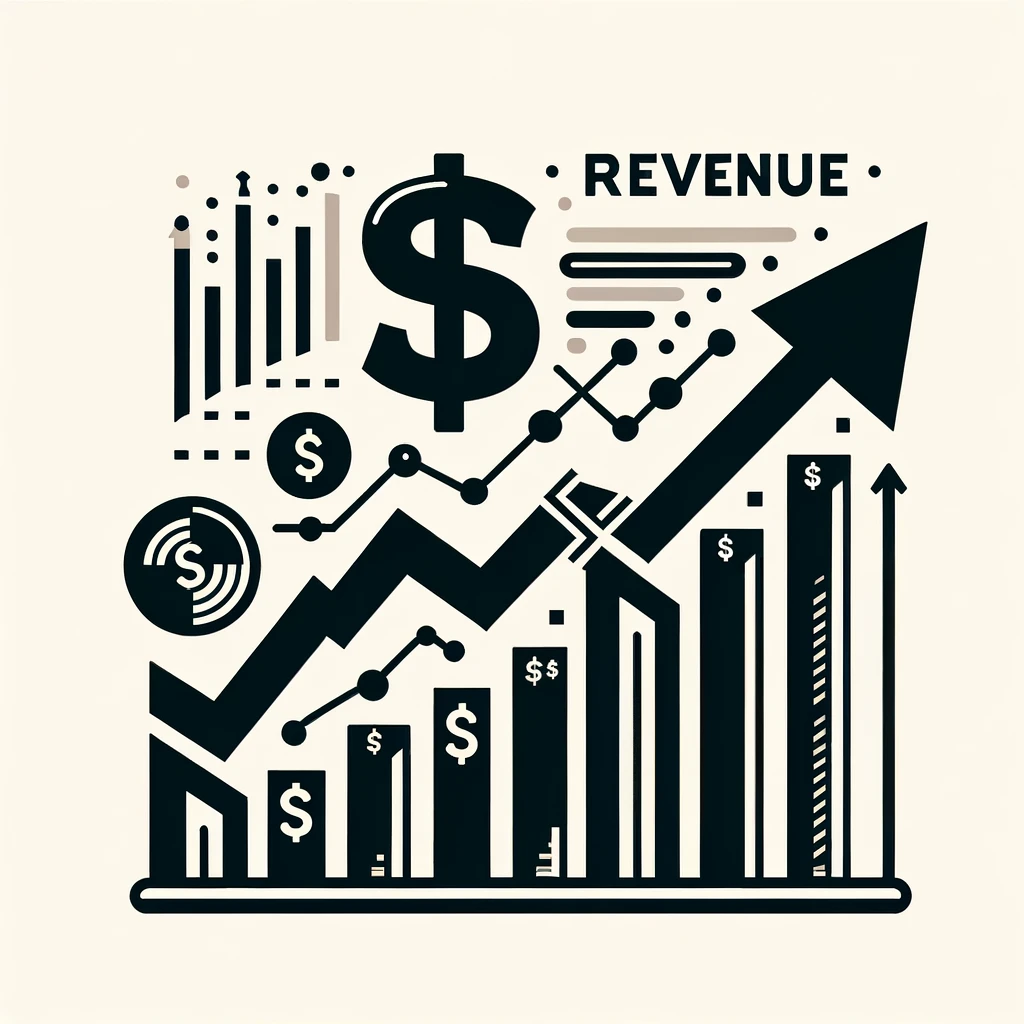Create Your Clothing Store Financial Plan with Fiscra’s Tailored Calculator
Planning the finances of a clothing store requires precision and foresight. Fiscra’s Clothing Store Financial Plan calculator offers a user-friendly platform to forecast your store’s financial future, ensuring a stylish approach to crunching numbers.
Why Choose Fiscra’s Clothing Store Financial Plan Calculator
Fiscra’s Clothing Store Financial Plan calculator is the ideal solution for store owners looking to streamline their financial strategy. With its ability to calculate key financial metrics such as revenue, expenses, profit, profitability, and ROI, it serves as an indispensable tool for making informed business decisions. This calculator stands out for its straightforward functionality, enabling you to project your store’s financial health accurately and efficiently, ensuring that you stay on top of your business goals.

Key Features of the Clothing Store Financial Plan Calculator
Comprehensive Projections: Detailed revenue, cost, and profit estimations.
Customization: Ability to set various key parameters specific to your business model.
Ease of Use: Straightforward input fields for quick data entry.
Dynamic Reporting: Instant visual graphs for better financial understanding.
Scenario Analysis: Test different financial outcomes based on changing variables.
How to Use the Clothing Store Financial Plan Calculator
Input your initial data like product pricing, cost per item, and monthly sales volume. With options to input fixed expenses and initial investments, you’ll have a complete financial overview at your fingertips.
A successful clothing store operates on a sound financial strategy. Fiscra’s calculator helps you weave together all financial aspects of your business, from revenue to net profit, ensuring your venture remains as current as the trends you stock.
Ready to tailor your financial success? Try Fiscra’s Clothing Store Financial Plan right now.

Creating an Effective Clothing Store Income Statement with a Clothing Store Financial Plan Calculator
Navigating the financial landscape of a clothing store requires careful planning and analysis. A dedicated financial plan calculator for clothing stores can simplify this process, enabling owners to make informed decisions that drive growth and profitability. Here’s how to effectively use such a calculator:
Step 1: Input Product Categories and Pricing
Start by dividing your inventory into categories like T-shirts, Sweaters, etc. Assign retail prices to each category to lay the groundwork for your financial plan (another name is a financial model) , estimating potential income from your product assortment and pricing strategy.
=> This financial model enables the creation of a 3-year financial forecast. Select “Use the same values for 2-nd and 3-rd year” for easier data entry if consistent data is expected.

Step 2: Estimate Sales Volume
Determine the expected sales volume for each category, taking into account seasonal trends and market demand. Accurate sales volume estimates are crucial for projecting total revenue and managing stock levels efficiently.

Step 3: Detail Cost of Goods Sold (COGS)
Enter the cost of goods sold for each category, which includes the purchase cost from suppliers and additional expenses such as shipping. Understanding COGS is vital for calculating gross profit and assessing the profitability of your product lines.

Step 4: Sales Commissions and Discounts Calculation
Specify any sales commissions or discounts as a percentage of the retail price. This step is essential for accurately forecasting net sales revenue after accounting for discounts given to customers or commissions paid to sales staff.

Step 5: Account for Operating Expenses
Include all operating expenses related to the daily operations of your store, such as rent, utilities, salaries, marketing, and others. A comprehensive view of your expenses is necessary for a complete financial analysis.

Step 6: Initial Investments Calculation and Calculate Button
Estimate the initial investments required for starting or expanding your store, including costs for leasehold improvements, initial inventory purchase, fixtures, and signage.
=> Calculate the total amount of them to enter into the calculator’s initial data.
=> After entering all relevant data, click the “Calculate” button on the calculator to generate your financial plan. with the 3-year forecast.

Step 7: Generate Clothing Store Income Statement
The calculator will automatically provide an income statement forecast (another name for it is a profit and loss forecast), illustrating your store’s financial performance with details on revenue, COGS, gross profit, expenses, and net profit.
7.1 For the first year the clothing store income statement is created with a detailing of the financial data by months:

7.2 At the end of the clothing store income statement ( profit and loss forecast) you can see the total financial data ( revenue, expenses, and profit) for each of the 3 forecasted years:

Step 8: Financial Ratio Analysis
This essential component of the financial planning process involves the calculator automatically calculating key financial ratios for the clothing store. Ratios such as net profit margin (profitability), ROI, revenue, and net profit growth are evaluated to assess the store’s financial health, operational efficiency, and profitability. The process of analyzing the financial data is known as a financial analysis.

The automatic generation of these ratios simplifies the analysis, providing store owners with immediate insights into their business’s performance. Understanding these metrics is vital for benchmarking against industry standards, identifying areas for improvement, and strategizing for future success. This automated analysis is a fundamental feature of the calculator, designed to support informed, data-driven decision-making.
Step 9: Graphs and Diagrams Analysis
Analyze the graphs and diagrams produced by the calculator to visually interpret your store’s financial data. These visuals can reveal insights into sales trends, profitability, expense distribution, and the overall financial health of your business, aiding in strategic planning.
9.1 Analyze revenue growth, profit, and profitability for the 3 years of the clothing store financial plan

9.2 Analyze the structure of revenue and expenses of the clothing store financial plan. It will help you to understand what types of goods provide you with the main part of your income. At the same time, you will understand that types of expenses are the most significant for your business.

Step 10: Review and Refine Financial Projections for Your Clothing Business
Critically examine the financial plan for realism and accuracy. The calculator’s flexibility allows you to modify inputs and refine your projections, ensuring they align with realistic business objectives and market conditions.
=> Click the back arrow to update the initial data:

By leveraging a clothing store financial plan calculator, retailers can craft a robust financial plan that not only helps manage finances effectively but also guides strategic decisions for future growth. Regularly updating and reviewing your financial plan in response to market changes is key to sustaining profitability and achieving long-term success.
Explanation of vital financial indicators for our Clothing Store Financial Plan calculator

Revenue for a clothing store is the total income generated from the sale of clothing and related products to customers. It includes all sales made in the store, both in-person and online, such as the purchase of t-shirts, pants, dresses, and other items.
Fixed monthly expenses for a clothing store are recurring costs that the business must pay regularly, regardless of the level of sales.
Examples of fixed monthly expenses for a clothing store include rent or lease payments for the retail space, utilities (electricity, water), salaries of permanent staff, marketing and advertising expenses, and maintenance costs for the store.
COGS for a clothing store represents the direct expenses associated with acquiring or producing the clothing products sold to customers. This includes:
- the cost of purchasing clothing items from suppliers or manufacturing costs: fabrics and accessories (for own production of clothes),
- packaging materials,
- the delivery charge to customers if it is included in the sales price: free delivery for customers;
- and any other costs directly tied to the procurement, production, and preparation of the clothing items.
For instance, COGS for a clothing store may include the cost of purchasing wholesale clothing items from manufacturers or distributors.
Initial investments for a clothing store are the upfront expenses required to start and establish the business.
These investments include costs such as purchasing a retail space ( if applicable), initial store renovations, furniture, and any necessary equipment.
Net profit for a clothing store is earnings available to the store’s owners after deducting all expenses, including COGS, fixed monthly expenses, and other costs, from the total revenue generated.
Net profit is a key measure of the store’s profitability and is used to evaluate its financial performance. That is why one of the main purposes of our clothing store financial plan calculator is net profit calculation. You can see its calculation in the profit and loss forecast.
Other financial indicators in the clothing store financial plan calculator: profitability, ROI, revenue, and profit growth will help you assess the effectiveness of investments for the business setup.
